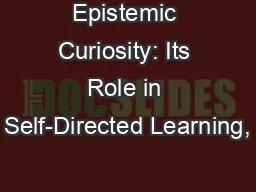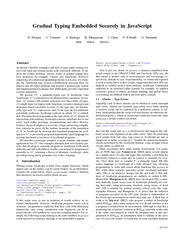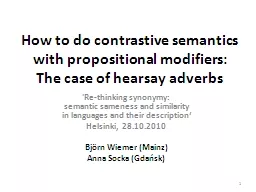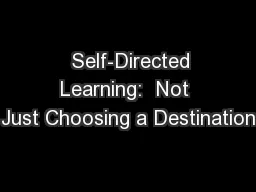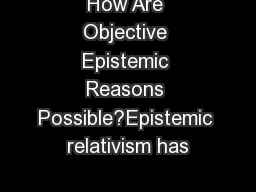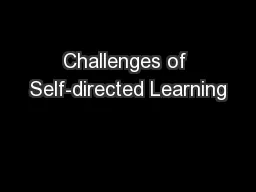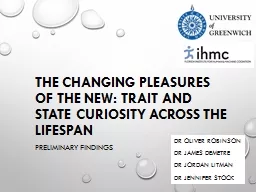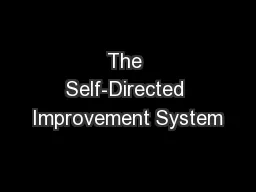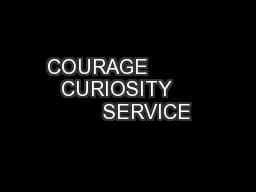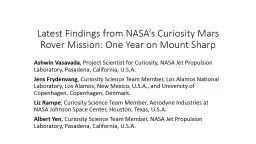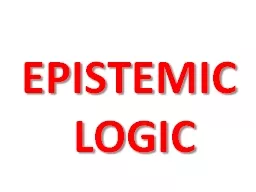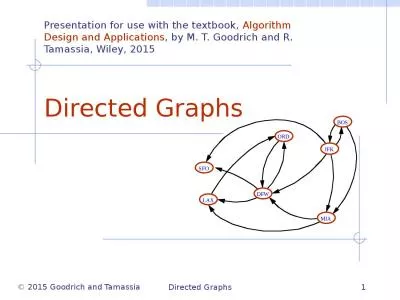PPT-Epistemic Curiosity: Its Role in Self-Directed Learning,
Author : jane-oiler | Published Date : 2018-03-08
SelfRegulation Creativity and Problem Solving Jordan Litman Institute for Human and Machine Cognition University of Maine at Machias What do we mean by Curiosity
Presentation Embed Code
Download Presentation
Download Presentation The PPT/PDF document "Epistemic Curiosity: Its Role in Self-Di..." is the property of its rightful owner. Permission is granted to download and print the materials on this website for personal, non-commercial use only, and to display it on your personal computer provided you do not modify the materials and that you retain all copyright notices contained in the materials. By downloading content from our website, you accept the terms of this agreement.
Epistemic Curiosity: Its Role in Self-Directed Learning,: Transcript
Download Rules Of Document
"Epistemic Curiosity: Its Role in Self-Directed Learning,"The content belongs to its owner. You may download and print it for personal use, without modification, and keep all copyright notices. By downloading, you agree to these terms.
Related Documents

